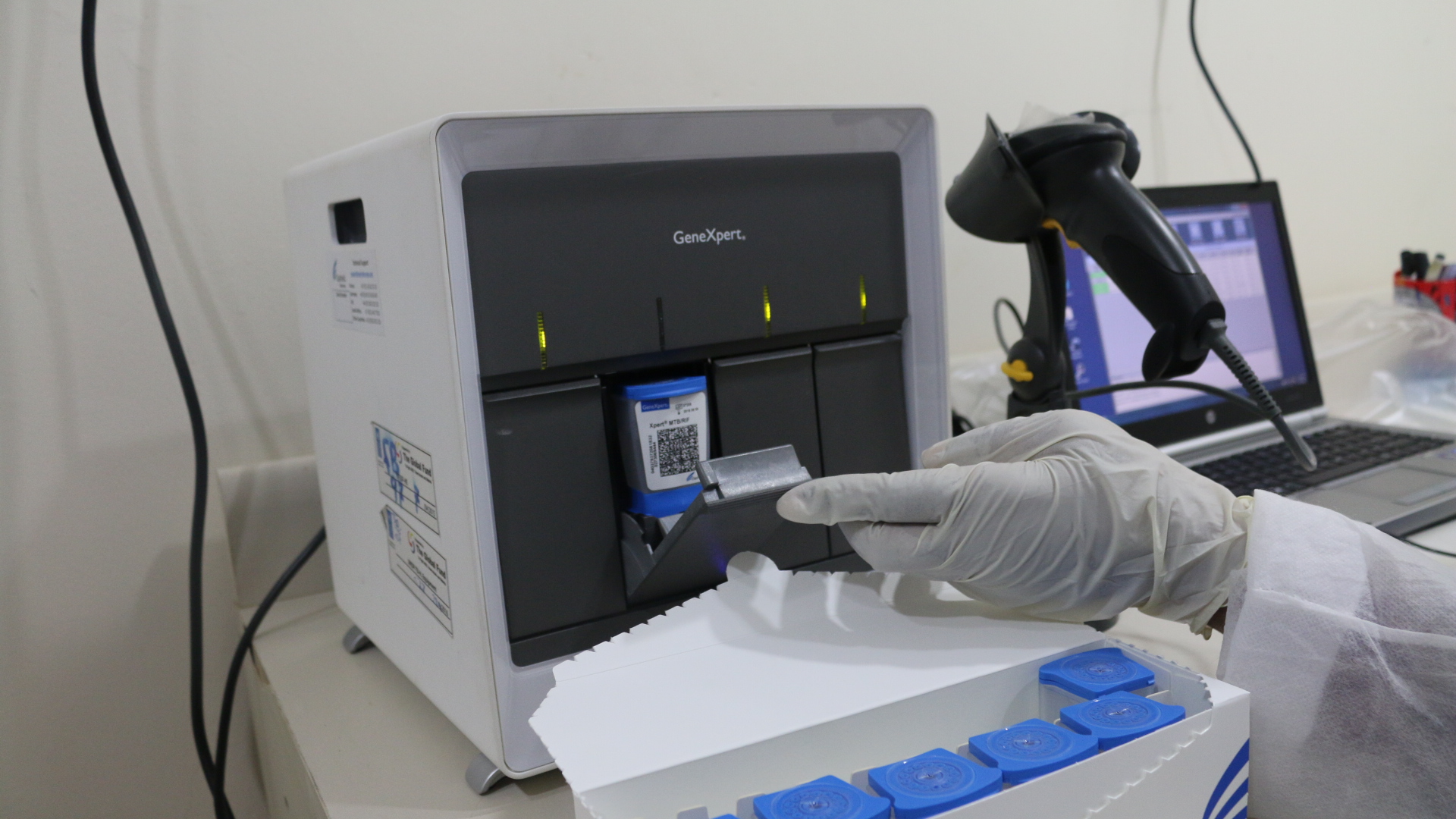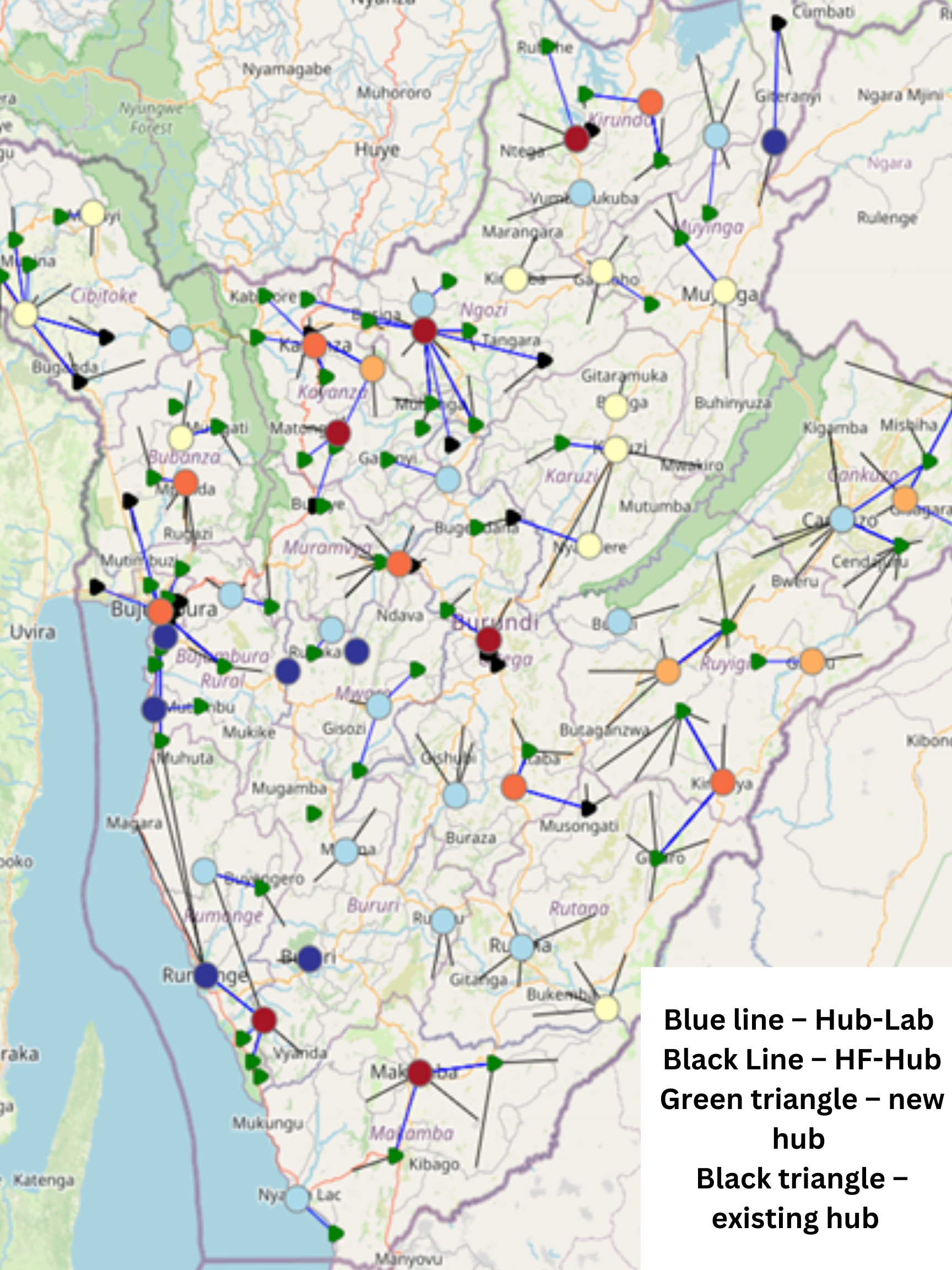
Laboratory testing plays a central role in HIV treatment and prevention. Healthcare workers rely on timely and accurate test results so people receive the treatment they need as soon as they need it. In many countries, laboratories have difficulty getting test results out quickly, putting patients at risk.
In Burundi, a new approach is being implemented to ensure equitable access to HIV testing and other diagnostic services nationwide. This approach includes redistributing equipment to areas where it can be used more effectively and enhancing training for laboratory staff. This process is spearheaded by several champions for laboratory efficiency, including Virginie Nahishakize of the Burundian Ministry of Health (MOH).
After assessing the country's laboratory network, it became clear that testing equipment was not being used efficiently, leading to over-capacity in some areas and lengthy delays in other parts of the country. Thanks to the hard work of technical specialists like Virginie, the MOH believes they have the answer for more efficient use of the country’s laboratories.
Diagnostic Network Optimization (DNO) is a strategy aimed at improving the efficiency and effectiveness of diagnostic testing laboratories throughout the country to improve efficiency, reduce costs, and enhance the delivery of diagnostic services. DNO aims to ensure that diagnostic services are delivered promptly, accurately, and efficiently to support healthcare delivery and patient outcomes.
“Our work with USAID on DNO will transform laboratory management and organization in Burundi by ensuring an equitable distribution of testing equipment across the country, eliminating the underutilization of certain machines, decreasing the turnaround time for results, and reducing transportation costs.” – Virginie Nahishakize
Optimizing a diagnostic network consists of using all the existing equipment to carry out HIV viral load measurement, early diagnosis of HIV in newborns, and TB detection. When Virginie and her colleagues began researching the implementation of DNO, they found that machines were not being used to their capacity.

“We found that 23 machines were being used at a capacity of 0.1% to 25%, with eight of these machines being in Bujumbura Mairie. This means that there were not enough tests in the surrounding regions to use these machines. They could be moved to a more efficient location.” – Virginie Nahishakize
Virginie and her team realized that if the equipment was redistributed, they could reduce the distance between health facilities and labs and cut down the turnaround times for diagnostic testing. This would allow the machines to achieve their full potential and help patients get results faster. Burundi’s Ministry of Public Health and Aids Control and the National Aids Control Program began developing a diagnostic network optimization approach based on relocating these machines to strengthen their laboratory network.
Two diagnostic testing machines were selected to be relocated. One machine was moved from Ngozi Hospital in northern Burundi to Ruyigi Hospital, which covers the country's eastern region. The other machine was moved from the capital city of Bujumbura to Makamba Hospital, which covers the southern region of the country.
In addition, 12 GeneXpert devices used for viral load testing were relocated to different sites around the country, allowing them to serve 17 health districts. Sixty-four health centers around the country are currently being transformed into pre-treatment sites, ensuring more efficient service delivery for patients at risk of HIV.
Before this DNO optimization strategy, there were 160 health facilities where the nearest GX device was over 45 km away. Now there are only 7 health facilities where the nearest GX device is further than 45 km away, a significant drop. The average distance that samples need to travel also decreased by 1/3, dropping from 57 km to 17.2 km. This means that patients will benefit from a stronger network that gets them their test results in a more timely manner.
Burundi’s government’s approach to DNO, in collaboration with USAID, goes deeper than ensuring testing machines are being used to capacity. USAID, through GHSC-PSM, has committed to training lab technicians from all 49 districts of the country on biomedical waste management and laboratory equipment safety for viral load testing, early infant HIV testing, and tuberculosis.
GHSC-PSM is also collaborating with the National AIDS Control Program to evaluate a shared sample transport plan to test samples at the sites closest to the relevant health facilities. Meetings are held to analyze the status of the lab network optimization strategy and KPIs.
"The Laboratory Diagnostic Network Optimization (DNO) initiative in Burundi holds immense promise for strengthening the country's healthcare system. By optimizing the laboratory network, we can expect faster turnaround times for test results, improved accuracy of diagnoses, and ultimately, better patient care." – Octave Moumpala, GHSC-PSM Burundi Country Director
Increasing access to testing and having a quicker turnaround time for test results means that people will quickly get the answers and treatment they need. Although the work isn’t done yet, thanks to the work of champions like Virginie and her team, we are on a path to building a more robust laboratory network that will serve patients more effectively and efficiently, no matter where they are in the country.